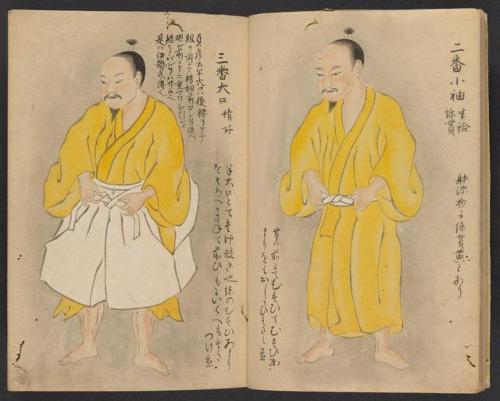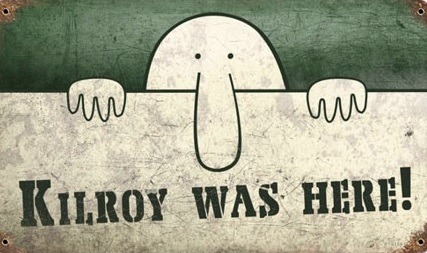(Image Caption: Measurement Of Brain Activity In A Patient With Phantom Limb Pain. Credit: Osaka University)

(Image caption: Measurement of brain activity in a patient with phantom limb pain. Credit: Osaka University)
Cause of phantom limb pain in amputees, and potential treatment, identified
Researchers have discovered that a ‘reorganisation’ of the wiring of the brain is the underlying cause of phantom limb pain, which occurs in the vast majority of individuals who have had limbs amputated, and a potential method of treating it which uses artificial intelligence techniques.
The researchers, led by a group from Osaka University in Japan in collaboration with the University of Cambridge, used a brain-machine interface to train a group of ten individuals to control a robotic arm with their brains. They found that if a patient tried to control the prosthetic by associating the movement with their missing arm, it increased their pain, but training them to associate the movement of the prosthetic with the unaffected hand decreased their pain.
Their results, reported in the journal Nature Communications, demonstrate that in patients with chronic pain associated with amputation or nerve injury, there are ‘crossed wires’ in the part of the brain associated with sensation and movement, and that by mending that disruption, the pain can be treated. The findings could also be applied to those with other forms of chronic pain, including pain due to arthritis.
Approximately 5,000 amputations are carried out in the UK every year, and those with type 1 or type 2 diabetes are at particular risk of needing an amputation. In most cases, individuals who have had a hand or arm amputated, or who have had severe nerve injuries which result in a loss of sensation in their hand, continue to feel the existence of the affected hand as if it were still there. Between 50 and 80 percent of these patients suffer with chronic pain in the ‘phantom’ hand, known as phantom limb pain.
“Even though the hand is gone, people with phantom limb pain still feel like there’s a hand there – it basically feels painful, like a burning or hypersensitive type of pain, and conventional painkillers are ineffective in treating it,” said study co-author Dr Ben Seymour, a neuroscientist based in Cambridge’s Department of Engineering. “We wanted to see if we could come up with an engineering-based treatment as opposed to a drug-based treatment.”
A popular theory of the cause of phantom limb pain is faulty ‘wiring’ of the sensorimotor cortex, the part of the brain that is responsible for processing sensory inputs and executing movements. In other words, there is a mismatch between a movement and the perception of that movement.
In the study, Seymour and his colleagues, led by Takufumi Yanagisawa from Osaka University, used a brain-machine interface to decode the neural activity of the mental action needed for a patient to move their ‘phantom’ hand, and then converted the decoded phantom hand movement into that of a robotic neuroprosthetic using artificial intelligence techniques.
“We found that the better their affected side of the brain got at using the robotic arm, the worse their pain got,” said Yanagisawa. “The movement part of the brain is working fine, but they are not getting sensory feedback – there’s a discrepancy there.”
The researchers then altered their technique to train the ‘wrong’ side of the brain: for example, a patient who was missing their left arm was trained to move the prosthetic arm by decoding movements associated with their right arm, or vice versa. When they were trained in this counter-intuitive technique, the patients found that their pain significantly decreased. As they learned to control the arm in this way, it takes advantage of the plasticity – the ability of the brain to restructure and learn new things – of the sensorimotor cortex, showing a clear link between plasticity and pain.
Although the results are promising, Seymour warns that the effects are temporary, and require a large, expensive piece of medical equipment to be effective. However, he believes that a treatment based on their technique could be available within five to ten years. “Ideally, we’d like to see something that people could have at home, or that they could incorporate with physio treatments,” he said. “But the results demonstrate that combining AI techniques with new technologies is a promising avenue for treating pain, and an important area for future UK-Japan research collaboration.”
More Posts from Philosophical-amoeba and Others
How Humans Change Space Itself
It’s no surprise that humans influence the surface of our planet, but our reach can go farther than that. Humans affect space, too.

We know storms from the sun can naturally change the space environment around Earth, which can have an impact on satellites and power grids.

Scientists now know that Cold War era nuclear tests in the 1950s caused similar effects.
Particles around Earth are organized into layers known as radiation belts. These 1950s tests created a temporary extra layer of radiation closer to Earth.

The effects of this could be seen all around the world. Aurora appeared at the equator instead of the poles, utility grids in Hawaii were strained, and in some cases, satellites above test sites were affected.

Some types of communications signals can also affect Earth’s radiation belts.
Very low-frequency waves, or VLFs, are used for radio communications. They are often used to communicate with submarines, because these waves can penetrate deep into the ocean.

The waves can also travel far into the space environment around Earth. When these waves are in space, they affect how high-energy particles move, creating a barrier against natural radiation.

The outer edge of this radio-wave barrier corresponds almost exactly the inner edge of Earth’s natural radiation belts – meaning it could be human activity that at least partly shapes this natural radiation around Earth.

For more NASA sun and space research, visit www.nasa.gov/sunearth and follow us on Twitter and Facebook.
Make sure to follow us on Tumblr for your regular dose of space: http://nasa.tumblr.com

Awesome things you can do (or learn) through TensorFlow. From the site:
A Neural Network Playground
Um, What Is a Neural Network?
It’s a technique for building a computer program that learns from data. It is based very loosely on how we think the human brain works. First, a collection of software “neurons” are created and connected together, allowing them to send messages to each other. Next, the network is asked to solve a problem, which it attempts to do over and over, each time strengthening the connections that lead to success and diminishing those that lead to failure. For a more detailed introduction to neural networks, Michael Nielsen’s Neural Networks and Deep Learning is a good place to start. For more a more technical overview, try Deep Learning by Ian Goodfellow, Yoshua Bengio, and Aaron Courville.
GitHub
h-t FlowingData
Why do men have Adam's apples. It's so sexy but seems so unnecessary
It basically is unnecessary lol
It’s not that only men have Adam’s apples, women do too, but it’s less prominent. An Adam’s apple is just a piece of cartilage that protects your larynx (the voicebox) directly behind it. As boys & girls go through puberty, our voicebox grows which:
1. Causes our voice to deepen 2. Pushes the cartilage further forwards
In boys, the larynx grows in size significantly more which therefore pushes forward the evident bump of cartilage we like to call an Adam’s Apple.

The hairstyle of this small girl, cut short and topped with a ribbon bow, seems to date this advertisement from the early 1950s. The printer is believed to be Whitcombe & Tombs, because the poster came to the Library with other material printed by that company.
[Whitcombe & Tombs Ltd?] :Goodness! that’s tempting. Weet-bix [ca 1954?]
Eph-C-FOOD-Whitcombe-2-03






Dress for the job you want.
Yoshiie Ason yoroi chakuyōzu 義家朝臣鎧着用次第 by Sadatake Ise is a pictorial work on how to put on Japanese Samurai armor. The subject is famed Samurai warrior Minamoto No Yoshiie.
Find more amazing rare books we’ve recently digitized from our Freer | Sackler branch library in our book collection, Japanese Illustrated Books from the Edo and Meiji Period.

This is what happens when a carrot is fired at 300 km/hour at an egg, through two sheets of cardboard.
This is what happens if you separate out the two sheets:

The egg survives! This shows how a Whipple shield works, and is what spacecraft use to protect themselves from micrometeoroid impacts in space. When the projectile (in this case a carrot, but in space it could be a speck of paint, a piece of an old satellite, or a bit of space rock) hits the first layer, it’s moving so fast that it starts to vaporise, because the energy of the collision is enough to break almost every bond in the substance.
It then sprays outwards, spreading the force of impact across a much wider area, meaning the second layer can stop it going any further, keeping your egg (or astronauts) safe.
Watch the full video on our YouTube channel.


Pacific Lamprey (Entosphenus tridentatus)
Lampreys in their mature stage are parasites, latching onto other fish with their suction cup like mouths. Keratinised teeth rasp away their host’s skin, as the lamprey releases anticoagulants to ensure a steady supply of blood. Many victims die of infections or blood loss.
Dave Herasimtschuk and Jeremy Monroe

Kilroy Was Here!
He’s engraved in stone in the National World War II Memorial in Washington, DC – back in a small alcove where very few people have seen it. For the WWII generation, this will bring back memories. For younger folks, it’s a bit of trivia that is an intrinsic part of American history and legend.
Anyone born between 1913 to about 1950, is very familiar with Kilroy. No one knew why he was so well known….but everybody seemed to get into it. It was the fad of its time!

At the National World War II Memorial in Washington, DC
So who was Kilroy?
In 1946 the American Transit Association, through its radio program, “Speak to America,” sponsored a nationwide contest to find the real Kilroy….now a larger-than-life legend of just-ended World War II….offering a prize of a real trolley car to the person who could prove himself to be the genuine article.

Almost 40 men stepped forward to make that claim, but only James Kilroy from Halifax, Massachusetts, had credible and verifiable evidence of his identity.
“Kilroy” was a 46-year old shipyard worker during World War II (1941-1945) who worked as a quality assurance checker at the Fore River Shipyard in Quincy, Massachusetts (a major shipbuilder for the United States Navy for a century until the 1980s).
His job was to go around and check on the number of rivets completed. (Rivets held ships together before the advent of modern welding techniques.) Riveters were on piece work wages….so they got paid by the rivet. He would count a block of rivets and put a check mark in semi-waxed lumber chalk (similar to crayon), so the rivets wouldn’t be counted more than once.

A warship hull with rivets
When Kilroy went off duty, the riveters would surreptitiously erase the mark. Later, an off-shift inspector would come through and count the rivets a second time, resulting in double pay for the riveters!
One day Kilroy’s boss called him into his office. The foreman was upset about unusually high wages being “earned” by riveters, and asked him to investigate. It was then he realized what had been going on.
The tight spaces he had to crawl in to check the rivets didn’t lend themselves to lugging around a paint can and brush, so Kilroy decided to stick with the waxy chalk. He continued to put his check mark on each job he inspected, but added ”KILROY WAS HERE!“ in king-sized letters next to the check….and eventually added the sketch of the guy with the long nose peering over the fence….and that became part of the Kilroy message.

Kilroy’s original shipyard inspection “trademark” during World War II
Once he did that, the riveters stopped trying to wipe away his marks.
Ordinarily the rivets and chalk marks would have been covered up with paint. With World War II on in full swing, however, ships were leaving the Quincy Yard so fast that there wasn’t time to paint them. As a result, Kilroy’s inspection “trademark” was seen by thousands of servicemen who boarded the troopships the yard produced.
His message apparently rang a bell with the servicemen, because they picked it up and spread it all over the European and the Pacific war zones.

Before war’s end, “Kilroy” had been here, there, and everywhere on the long hauls to Berlin and Tokyo.
To the troops outbound in those ships, however, he was a complete mystery; all they knew for sure was that someone named Kilroy had “been there first.” As a joke, U.S. servicemen began placing the graffiti wherever they landed, claiming it was already there when they arrived.

As the World War II wore on, the legend grew. Underwater demolition teams routinely sneaked ashore on Japanese-held islands in the Pacific to map the terrain for coming invasions by U.S. troops (and thus, presumably, were the first GI’s there). On one occasion, however, they reported seeing enemy troops painting over the Kilroy logo!
Kilroy became the U.S. super-GI who had always “already been” wherever GIs went. It became a challenge to place the logo in the most unlikely places imaginable. (It is said to now be atop Mt. Everest, the Statue of Liberty, the underside of the Arc de Triomphe in Paris, and even scrawled in the dust on the moon by the American astronauts who walked there between 1969 and 1972.

In 1945, as World War II was ending, an outhouse was built for the exclusive use of Allied leaders Harry Truman, Joseph Stalin, and Winston Churchill at the Potsdam Conference. It’s first occupant was Stalin, who emerged and asked his aide (in Russian), “Who is Kilroy?”
To help prove his authenticity in 1946, James Kilroy brought along officials from the shipyard and some of the riveters. He won the trolley car….which he attached to the Kilroy home and used to provide living quarters for six of the family’s nine children….thereby solving what had become an acute housing crisis for the Kilroys.

The new addition to the Kilroy family home.
* * * *
And the tradition continues into the 21st century…

In 2011 outside the now-late-Osama Bin Laden’s hideaway house in Abbottabad, Pakistan….shortly after the al-Qaida-terrorist was killed by U.S. Navy SEALs.
>>Note: The Kilroy graffiti on the southwest wall of the Bin Laden compound pictured above was real (not digitally altered with Microsoft Paint, as postulated by some). The entire compound was leveled in 2012 for redevelopment by a Pakistani company as an amusement park….and to avoid it becoming a shrine to Bin Laden’s nefarious memory.
* * * *
A personal note….
My Dad’s trademark signature on cards, letters and notes to my sisters and I for the first 50 or so years of our lives (until we lost him to cancer) was to add the image of “Kilroy” at the end. We kids never ceased to get a thrill out of this….even as we evolved into adulthood.
To this day, the “Kilroy” image brings back a vivid image of my awesome Dad into my head….and my heart!
Dad: This one’s for you!

-
 crystalkleure liked this · 4 years ago
crystalkleure liked this · 4 years ago -
 pleasurehunter2000 liked this · 4 years ago
pleasurehunter2000 liked this · 4 years ago -
 christophertherobin reblogged this · 8 years ago
christophertherobin reblogged this · 8 years ago -
 membranoproliferative reblogged this · 8 years ago
membranoproliferative reblogged this · 8 years ago -
 clearlyjoyfulstudentstuff liked this · 8 years ago
clearlyjoyfulstudentstuff liked this · 8 years ago -
 ejyuan-blog reblogged this · 8 years ago
ejyuan-blog reblogged this · 8 years ago -
 fstefan0 reblogged this · 8 years ago
fstefan0 reblogged this · 8 years ago -
 110-110-110 liked this · 8 years ago
110-110-110 liked this · 8 years ago -
 miraclesweetpetalove liked this · 8 years ago
miraclesweetpetalove liked this · 8 years ago -
 nsukhu reblogged this · 8 years ago
nsukhu reblogged this · 8 years ago -
 erikaisfinie liked this · 8 years ago
erikaisfinie liked this · 8 years ago -
 twigzl liked this · 8 years ago
twigzl liked this · 8 years ago -
 andr0nicus liked this · 8 years ago
andr0nicus liked this · 8 years ago -
 philosophical-amoeba reblogged this · 8 years ago
philosophical-amoeba reblogged this · 8 years ago -
 itslavenderandpoppy liked this · 8 years ago
itslavenderandpoppy liked this · 8 years ago -
 queenofeire liked this · 8 years ago
queenofeire liked this · 8 years ago -
 forgetful-amoeba liked this · 8 years ago
forgetful-amoeba liked this · 8 years ago -
 doctor-neuro-blog liked this · 8 years ago
doctor-neuro-blog liked this · 8 years ago -
 nurnielfa liked this · 8 years ago
nurnielfa liked this · 8 years ago -
 megasexybulldog-blog liked this · 8 years ago
megasexybulldog-blog liked this · 8 years ago -
 luminousradar liked this · 8 years ago
luminousradar liked this · 8 years ago -
 evotivity liked this · 8 years ago
evotivity liked this · 8 years ago -
 everywhere-beauty liked this · 8 years ago
everywhere-beauty liked this · 8 years ago -
 drgreysanatomy liked this · 8 years ago
drgreysanatomy liked this · 8 years ago -
 inlovewithneuro reblogged this · 8 years ago
inlovewithneuro reblogged this · 8 years ago -
 ingurdzgalleta liked this · 8 years ago
ingurdzgalleta liked this · 8 years ago -
 shotofstress liked this · 8 years ago
shotofstress liked this · 8 years ago -
 ambreeeeeee liked this · 8 years ago
ambreeeeeee liked this · 8 years ago -
 dancezwithwolvez liked this · 8 years ago
dancezwithwolvez liked this · 8 years ago -
 concrete-heartbeat reblogged this · 8 years ago
concrete-heartbeat reblogged this · 8 years ago -
 gromet88 liked this · 8 years ago
gromet88 liked this · 8 years ago -
 psychologyexperience reblogged this · 8 years ago
psychologyexperience reblogged this · 8 years ago -
 psychologyexperience liked this · 8 years ago
psychologyexperience liked this · 8 years ago -
 loudhappychicken-blog liked this · 8 years ago
loudhappychicken-blog liked this · 8 years ago -
 theghostgivenup-blog liked this · 8 years ago
theghostgivenup-blog liked this · 8 years ago -
 8bithoodrat reblogged this · 8 years ago
8bithoodrat reblogged this · 8 years ago
A reblog of nerdy and quirky stuff that pique my interest.
291 posts





